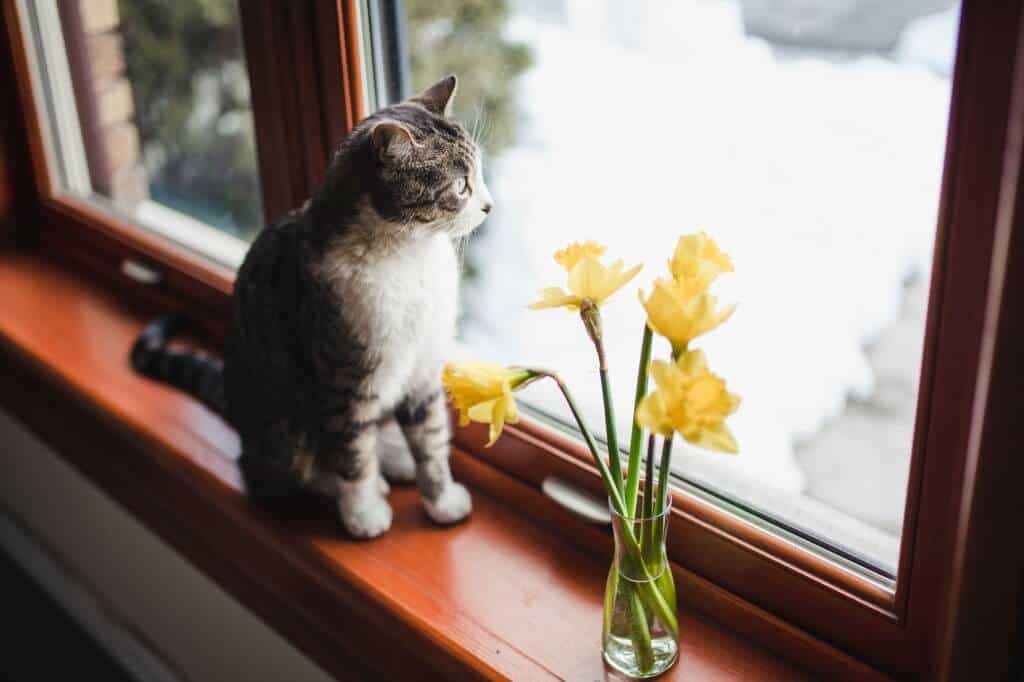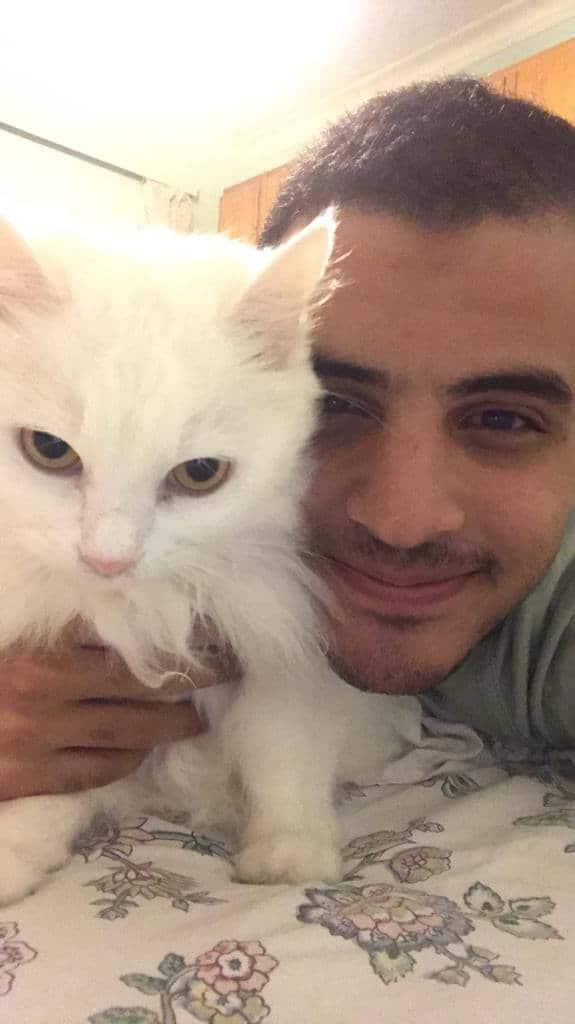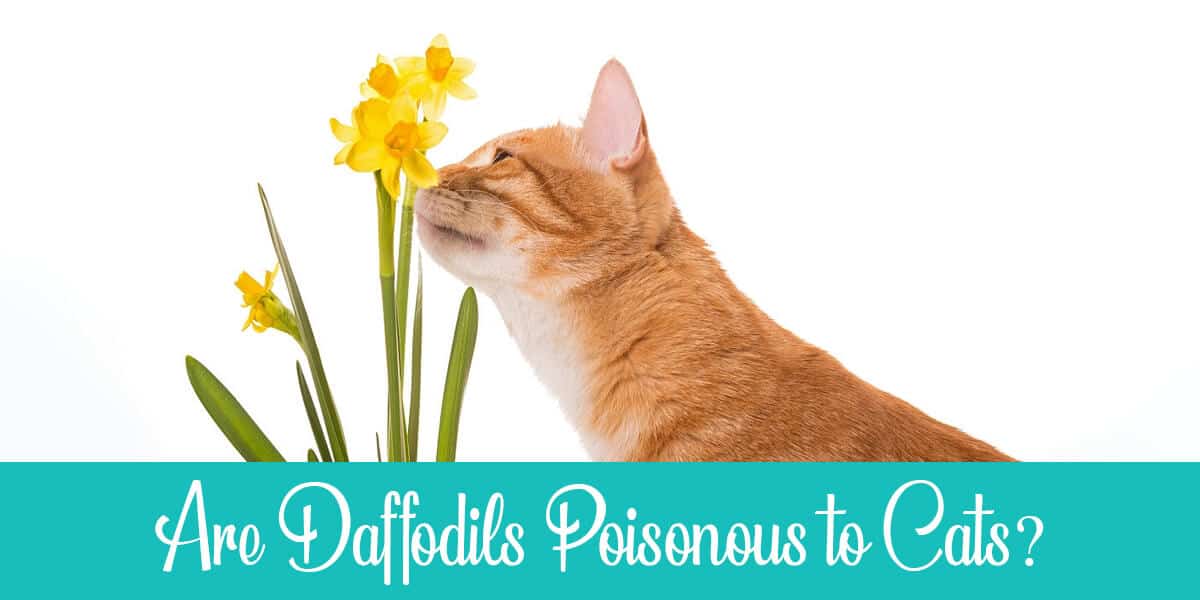Daffodils are lively and bright, which explains why a lot of people like having them in their houses. Usually, buying a plant should be as easy as going to the store and getting it. But when you have a cat, a lot of things change.
You need to think twice about buying a houseplant when you have a cat. Is it poisonous? Will the cat ruin it?
If you manage to answer those, you’re okay to get the plant you want.
How about daffodils? Are they poisonous to cats?
Table of Contents
Are Daffodils Poisonous to Cats?
Yes, daffodils are poisonous to cats. The bulb is the main culprit, being the most toxic part. However, the cat may get poisoning symptoms if she eats the leaves or the head as well, so it’s better to avoid getting daffodils altogether.
If your cat eats a daffodil, it can cause vomiting and other digestive symptoms.
Why Are Daffodils Poisonous to Cats?
Daffodils are simply poisonous to cats because they contain lycorine, which is an alkaloid that triggers harsh vomiting and leaves other negative effects on cats. The harmful crystals are mostly in the bulb’s outer layer.
The bulb is supposedly the part with the alkaloid concentration, so it’s the most toxic part. However, that doesn’t mean the other parts are clean. The whole plant is harmful for your cat.
You may be surprised to find that daffodils aren’t only toxic for cats, but for dogs and horses as well. Upon consumption, they may cause diarrhea, low blood pressure, nausea, vomiting, and even seizures.
Recommended: Are lupins poisonous to cats?
What Are the Symptoms of Daffodils Poisoning in Cats?

The symptoms of daffodil poisoning in cats are pretty obvious and happen rapidly, so you’ll definitely notice something is wrong with your feline.
If your cat consumed daffodils a short while ago, you may see a lot of different symptoms, depending on the body’s way of fighting it. Here’s a rundown of the most common symptoms:
- Nausea
- Vomiting
- Stomach pain
- Excessive drooling
- Fast heart rate
- Low blood pressure
- Seizures
- Heart arrhythmia
- Diarrhea
- Shivering
Some cats may also develop symptoms more similar to humans, such as skin irritation. The plant contains calcium oxalate crystals, which are known to cause irritation to the human skin. Your cat may develop a rash as well after touching the plant for a prolonged period.
In some cases, the symptoms go away on their own within one or two days. That’s if your cat only consumed a small piece, or has a pretty solid immune system.
If that doesn’t happen, or if the symptoms are a bit too harsh for your liking, you should seek the vet’s attention urgently. The faster, the better. You don’t have to wait until most of the symptoms listed above appear.
Related:
– Are Dracena Leaves Poisonous to Cats?
– Are gladiolus poisonous to cats?
What to Do If Your Cat Is Poisoned By Daffodils
Your cat may or may not need instant veterinary intervention. In some cases, you can solve it on your own without going to the vet, so there’s no need to panic until you know how far the poisoning went.
For starters, check your cat’s body for signs of leaves or plant matter. Look closely near her mouth and inside her fur if it’s thick. If you notice some near her mouth, then there’s a high chance she ate the daffodils.
Although poisoning is generally unpleasant, daffodil poisoning isn’t fatal—at least in the majority of cases. So, before panicking and visiting the vet, give him a call and explain the situation. Tell him about any symptoms that your cat is showing, and he’ll tell you what to do, and if the case needs immediate intervention.
Knowing which part of the daffodil your cat ate can save the vet a lot of time, so try to look for that when you notice the issue. You can also take a sample of the flower if you’re visiting the clinic, so he can examine it and determine its toxicity level. If you can’t take a sample, a photo on your mobile phone will suffice.
Vets mostly give medication to cats suffering from daffodil poisoning. The medicines should induce vomiting, getting the toxins out of the cat’s system as soon as possible.
Some vets also offer intravenous fluids for cats that have been vomiting for a few hours.
Daffodil Alternatives That Are Safe for Cats
If you absolutely want to have flowers in your house, there are multiple alternatives to daffodils you may consider. Although most of them aren’t as bright and lively, they’ll add a flair of beauty to your rooms.
Here’s a rundown of the flowers that are safe for your cat:
- Limonium
- Statice
- Orchid
- Freesie
- Lipstick plant
- Gerbera daisy
- Zinnia
- Rose
- Sunflower
- Spring crocus
Must Read: Is bougainvillea toxic to cats?
What If You Want to Have Daffodils in Your House?
Some people specifically want daffodils in their houses because of their bright yellow color. So, any other plant won’t do. They want the bell-like shape of daffodils complimenting their walls.
If that’s the case with you, you’ll want to take some measures to protect your cat. For one, put the daffodils somewhere cats can’t reach, be it a high counter or a shelf. You can also keep them in a room your cat isn’t allowed to go into.
If your daffodils are in the backyard or garden, you can block your cat’s access to them. There are multiple ways to do so, but the most popular methods are installing a fence or adding some netting. These should keep your cat away from the toxic daffodils.
All that said, it’s still better to prevent the risk and not get daffodils inside or outside your house. You never know how curious your cat can get, and it’s better to take care because you’d be compromising her health.
To Wrap Up
Daffodils are a no-no for cat owners. They’re poisonous, and they cause a lot of unnecessary symptoms. It’s better to replace them with orchids, roses, or any other flower that’s safe for cats. Or, keep them out of reach by putting them on a high shelf or in a closed room.

I’ve been living with cats since 2008 and I can confidently say I have more feline friends than humans lol. I currently live with 5 cats in different life stages; two of them are less than one year old, one is 2-ish years old and the oldest two are 9-ish years old. I’ve developed a strong bond with cats over the years and I’m eager to share my experience through this blog. You can learn more about my cats here.

